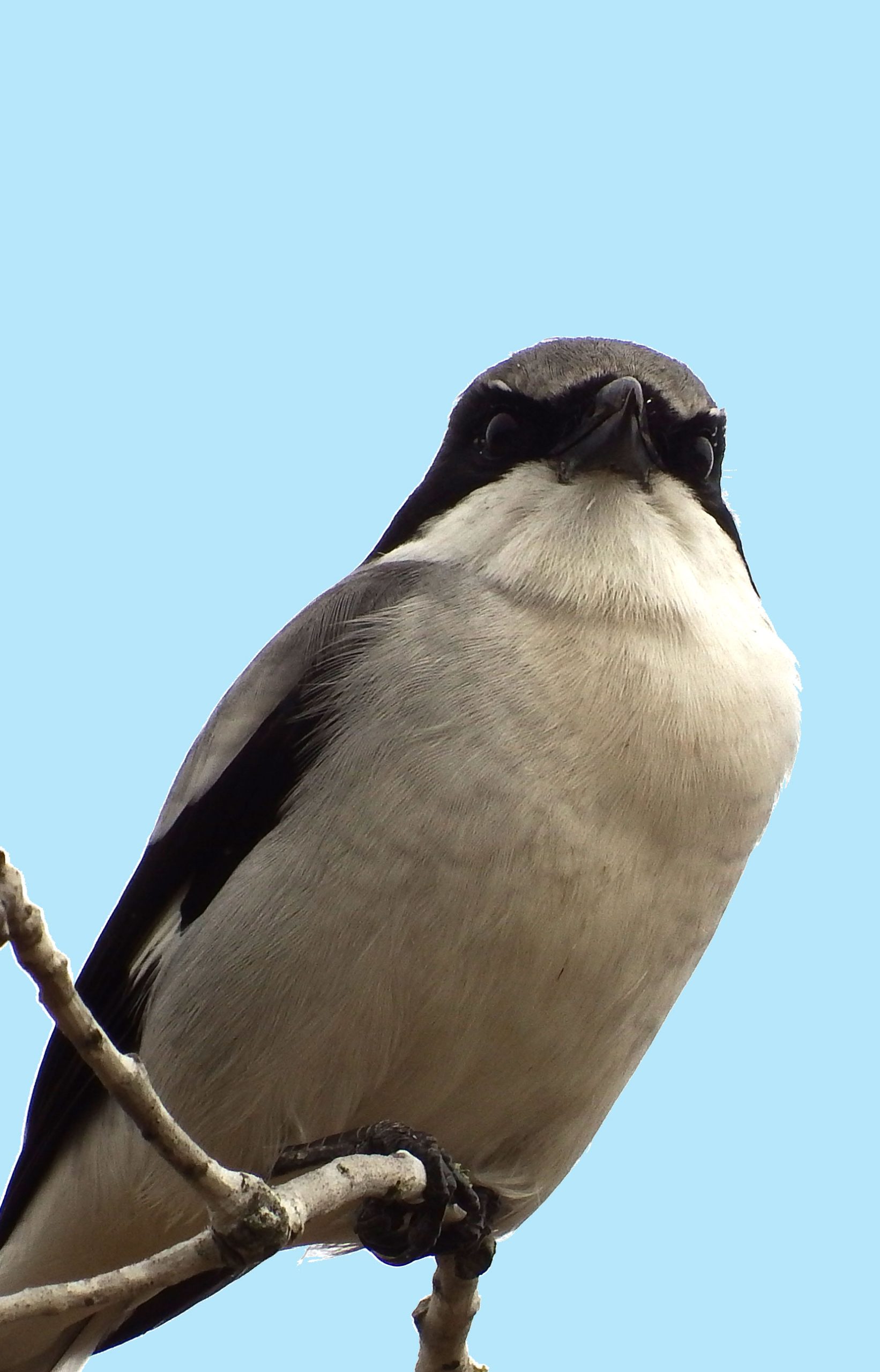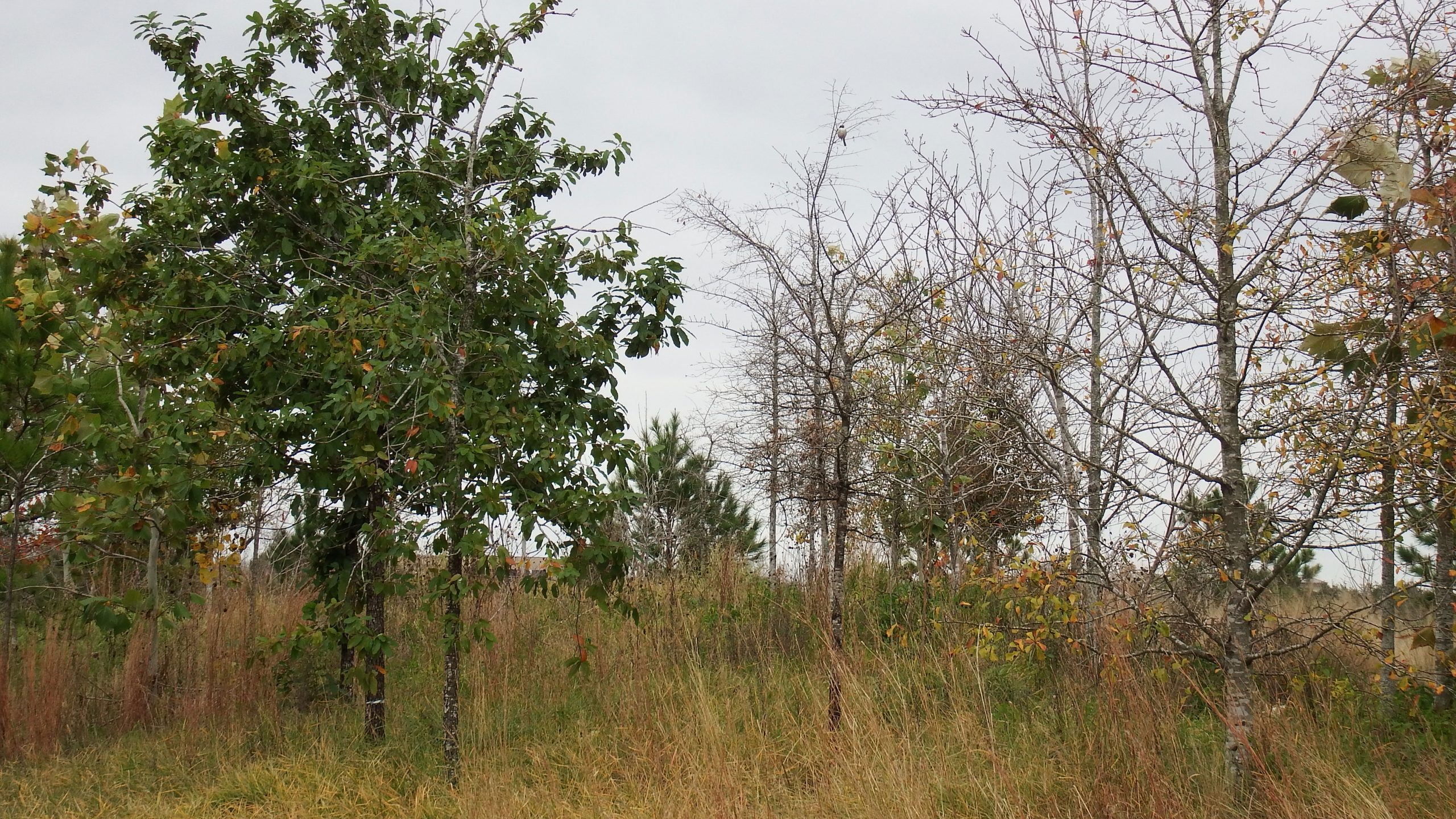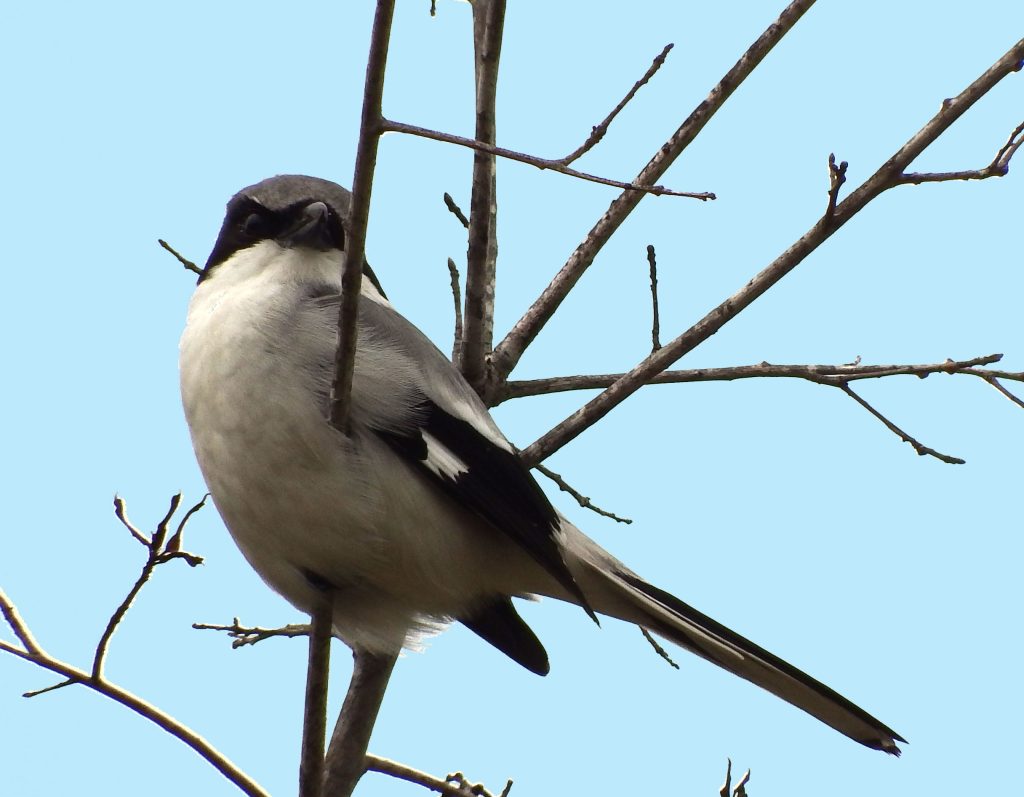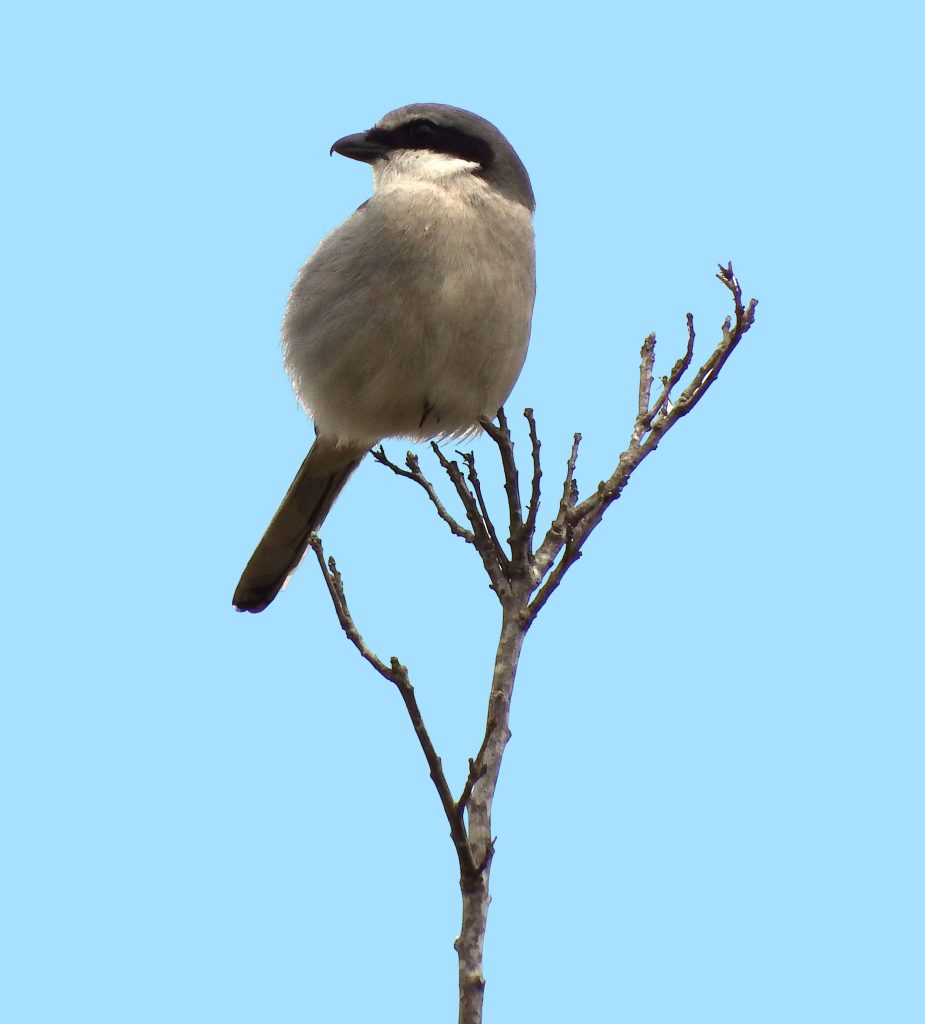Killer!
 It’s a brand new year and this blog is starting it off with a bang.
It’s a brand new year and this blog is starting it off with a bang.
We have a pair of loggerhead shrikes in the Park. Wait, you’re not jumping up and down with glee? Then let me explain.
Loggerhead shrikes are cool birds for a bunch of reasons I will get into. But the reason I’m so outrageously happy is that 20 years ago, our park was full of loggerhead shrikes. 20 years ago, the country was full of loggerhead shrikes. But they are one of the species that have been in precipitous decline. Their numbers are down almost 70% in the last 30 years. In the past five years, I have seen maybe two loggerhead shrikes in the park.
The reason shrikes are in decline is that insects are in decline. Shrikes eat mostly insects, but also mice, lizards, snakes and even other birds (note that most of these eat insects). As insects start to disappear, things that eat insects disappear right along with them.
Buffalo Bayou Park is part of a large movement along the Gulf Coast to restore our native coastal prairie ecosystem. For at least 20,000 years, the area from Louisiana to Corpus was grassland. Buffalo Bayou is named for the enormous herds of buffalo the first Europeans found right here. When the Allen brothers arrived, they found not a swamp and certainly not a forest. They found a prairie. And then everyone followed and plowed it up paved it over and generally made it disappear so completely that most people don’t even know it existed let alone how amazing it was.

Shrikes hunt from perches over grassland. You can see the shrike in the top of the tree in the center of the photo.
The prairie restoration project has changed the face of the Park. I cannot say that we have an actual prairie in the Park, but we have a ton of native grasses and quite a few flowering natives as well. The reason for re-establishing prairies isn’t just that they are beautiful or that they are historically correct. The reason is that there are many animals who depend on a prairie to thrive. A coastal prairie is one of the most diverse ecosystems we have. It is so abundantly full of life, the only place I’ve ever been that outdoes it is a coral reef.
Since the goal of the prairie restoration movement isn’t just to make the place pretty, the measure of success is how many insects/rodents/snakes/birds/lizards we can support. It’s kind of hard to get a count on small things, but one of the ways to know that you have lots of little critters is that the predators who eat them show up.
Predators. Like a pair of loggerhead shrikes, right smack in the middle of the most prairie-like section of the Park. Those shrikes are like a first-place trophy, proof that the work of restoring native habitat is paying off in the way that really counts: abundant wildlife.

Shrikes look superficially like mockingbirds and are about the same size, but everything about a shrike is flashier.
The shrikes are cool because of what they say about our Park. But they are also cool because they are such a bad-ass bird. Shrikes, like more than half the birds on earth, are passerines, which means they fall within the taxonomic order Passeriformes. These birds are often referred to as songbirds, but they are more correctly perching birds. All passerines have three front-pointing toes and one rear-pointing toe and they have a special ligament that, when the bird bends its leg, the toes automatically grip. When they straighten their leg, the toes release. This way, they can remain perched even when sleeping.
While passerine feet are great for perching, they aren’t so great for killing and ripping apart prey. Hawks have huge strong talons. A hawk swooping down on prey will often kill it with the first talon strike. Shrikes have puny little feet that aren’t able to hold prey well enough to rip apart let alone kill on contact. For killing, the shrike has a tiny hook on the end of its bill. When the shrike strikes prey, they use that hook to sever vertebrae. If the first strike doesn’t do it, the shrike will shake the prey in its strong bill. But then, the shrikes have a problem. In order to eat the prey, they have to tear it into smaller bits. When hawks have this problem, they hold the dead prey in their talons and pull pieces off with their bill. But shrikes have puny feet that aren’t strong enough to hold prey while the powerful head and jaw rip at it. To hold their prey still so they can eat it, shrikes impale their kill on a thorn or barbed wire or wedge it in a small fork in a branch. Using that external object for support, the bird can tear apart its meal.

Note the deadly hook in the bill.
This habit of piercing prey on thorns or barbed wire have earned the shrike the memorable nickname of “butcher bird.” Shrikes will leave prey impaled on thorns for long periods. Sometimes, this is to allow toxins within certain species to degrade. Other times, the collection is a larder — food stored up for when prey is less abundant. The larder is also a way for a male shrike to prove his worth to females.
Shrikes are more or less monogamous and will defend their territory. This means that the two shrikes I saw in the Park are likely a nesting pair. And that means that everyone who has devoted time, money and energy into the prairie restoration effort in the Park should be enjoying a robust round of applause right about now.

If you want to look for shrike, try the Jane Gregory Garden and the trees along the hillside leading to numbers 14 and 15.

